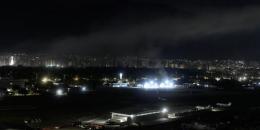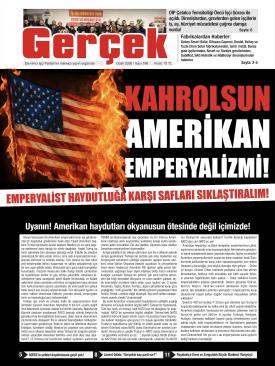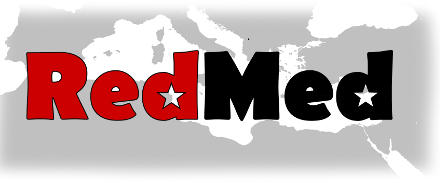From “Nazionalsozialismus” to “far-left fascism”

Trump is raising the stakes. From the position of “president of law and order”, he is turning into the presidential candidate of Ku Klux Klan. He used the 4th of July, the national holiday celebrating America’s independence, gained in 1776 through a revolutionary war, to set the terms of his strategic response to the immense social movement that brought millions of people out on the streets after the death of George Floyd in Minnesota at the end of May. In the speeches he made on Mount Rushmore on Friday the 3rd and at the White House on Saturday the 4th, he engaged in a headlong attack on the entire mass movement, not even distinguishing between those who took to the streets to demand justice and finally create a solution to the unceasing police brutality against African Americans using the classical methods of mass demonstrations and the element that tended towards looting, arson and other kinds of unorganised and wanton violence.
One aspect that is of immense importance is that he read his entire speech from the teleprompter. For someone who enjoys a freewheeling style of speaking, using short and decidedly unintelligent sentences and inserting crude bits of humour into his discourse, a carefully prepared speech with high-sounding phraseology of the type he never has recourse to sounded like Big Brother getting his act together. What we are interested in here is not the style in itself, but the substance behind it. This was a strategic action plan prepared by people better versed in the school of politics than Trump himself. In short, this was strategy being revealed to the world.
Here are some typical passages from his speech at Mount Rushmore, standing at the feet of George Washington, Thomas Jefferson, Abraham Lincoln and Theodore Roosevelt.
“Our nation is witnessing a merciless campaign to wipe out our history, defame our heroes, erase our values and indoctrinate our children… Angry mobs are trying to tear down statues of our founders, deface our most sacred memorials and unleash a wave of violent crime in our cities…
“We will expose this dangerous movement, protect our nation’s children from this radical assault, and preserve our beloved American way of life. In our schools, our newsrooms, even our corporate boardrooms, there is a new far-left fascism that demands absolute allegiance. If you do not speak its language, perform its rituals, recite its mantras, and follow its commandments, then you will be censored, banished, blacklisted, persecuted, and punished. It’s not going to happen to us. Make no mistake. This left-wing cultural revolution is designed to overthrow the American Revolution.”
There is so much to be learnt from these passages. One of the more striking ones is the phrase “even our corporate boardrooms”. This clearly shows, if anyone still doubts it, the hardly hidden struggle within the ranks of the US bourgeoisie that we have been talking about since Trump’s ascension to power, with the globalist wing of the class standing, for the moment, against Trump’s protectionist policies and his anti-immigrant posture. Of this more below.
Donning the mantle of anti-fascism
The so-called pundits for the liberal establishment immediately reacted by attributing the entire strategy to Trump’s “divisiveness” and his attempt to consolidate his own proper base in the face of a very adverse picture in public opinion polls, which shows that he is trailing by double-digit figures behind the Democrats’ presumptive presidential condidate Joseph Biden. Without forgetting to add that this is a hopeless strategy, as his base has narrowed after the miserable failure of his stance face to the Coronavirus crisis. And they have immediately dubbed it “Trump’s culture wars”.
Nothing of the sort. First, the “culture wars”, i.e. the intention attributed to the far left of destroying the American Revolution vs. the preservation by Trump of “our beloved American way of life”, is the ideological weapon that Trump has reached out for in order to broaden his base for the construction of an entire movement based on white supremacism. America has a natural constituency for fascism and that is the deep-seated division of society between the white majority and the others, starting of course with the African American and native American, the two “servants” of Theodore Roosevelt sitting proudly on his horse and gazing into the future in a monument that has now become contentious as a result of the people’s rebellion. It is this white supremacist natural constituency that Trump is trying to capitalise on.

Second, the key term is obviously “far-left fascism”. This is not exactly a neologism. Somewhat related to the theory of totalitarianism that equates fascism and the Stalinist variant of the communist movement and its applications, this has been used by liberals in Europe and America as an extreme recourse to distinguish themselves from Marxists. Its use by Trump (or rather by his speechwriters, since Trump is too much of an ignoramus to even have an inkling of the origins of the terms he would use) has a very distinctive purpose: in his preparation for the construction of a renewed white supremacist cum fascist movement, he is laying the ground for donning himself the mantle of anti-fascism! The reason is obvious and very similar to the “culture wars” sphere: it is clear that although the white majority of the United States can, under certain dire circumstances, be won over to fascism, it is not yet ready for that. This is even true for the fractions of the US bourgeoisie that support Trump. Hence he needs to cast his fight for the construction of a fascist movement in terms of its conceptual opposite, i.e. as “anti-fascism”.
This is nothing new in the history of fascism. In his day, Hitler, a rabid foe of socialism in pathological fear of a recurrence of the November revolution in Germany led by Rosa Luxemburg and Karl Liebknecht, named his party the National Socialist Workers Party of Germany. In other words, in an age when socialism was the trendsetter among the plebeian masses, he stole the mantle of that movement. To add insult to injury, he named his party a “Workers” party in order to lure the working class away from the two very powerful parties, the Social Democratic Party of Germany (SPD) and the Communist Party of Germany (KPD), which together commanded the overwhelming support of the workers. In an age when “socialism” has lost its prestige due to the failures faced by the 20th century experience of socialist construction, being who he is, Trump surely will not use the epithet. So he acts as hypocritically as Hitler, that arch-fascist of history, but in the opposite manner. Whereas Hitler stole the socialists’ clothes, he cries wolf while hiding in sheep’s skin!
The maverick proto-fascist
We are not saying that Donald Trump represents a fully-fledged fascist menace on the horizon. But we are saying that he has initiated a course in 21st century US history that is paving the way leading toward a home-bred fascism. We have explained this in earlier articles,[1] so we will make do with a very brief summary.
The Third Great Depression that set in with the collapse of the Wall Street bank Lehman Brothers in September 2008 led large fractions of the bourgeoisie in all countries, but in particular the leading imperialist ones, to take stock of the entire process that had led to the desperate situation in which the world capitalist system found itself. The long crisis that had started in the mid-1970s had led to the abandonment of Keynesian policies in favour of the neoliberal cum globalist assault on workers and peasants around the world, designed with the purpose of extricating capital out of its worldwide crisis at the expense of the labouring classes. This strategically important path of crisis management was what collapsed in 2008. What to do next then?
A definite new trend in the bosom of the national sections of the world bourgeoisie, shared despite all their specificities by the different movements in different countries, was to opt for national salvation where an international way out proved wanting. This is the basis of the “populist” movement, that terrible misnomer for parties and personalities that are in truth but precocious fascists. IN the case of the US, this is the basis of “making America great again” and of “America first”! This policy of retreating to the domestic market in order to leap forward to save one’s own country in a period of turmoil full of unpredictable calamities is the economic policy of fascism. And in an age when capital circuits have all become internationalised, this kind of protectionism and autarchy necessarily leads to the imposition of the will of the stronger states on the weaker ones through war. It is in this specific sense that Trump is a turn towards fascism in America.
Yet he, any more than a Marine Le Pen in France or a Matteo Salvini in Italy, cannot be considered a fully-fledged fascist, not because he tolerates the niceties of bourgeois democracy, for that is a tactical phase, but because he does not, any more than his French, Italian or other counterparts, possess a well-organised paramilitary force, the importance of which for a fascist movement we have elaborated upon in the already cited articles. That is why all of these movements should be characterised as proto-fascist currents. Our analysis has so far shown the commonalities between the different proto-fascist movements and personalities. However, there is another difference of crucial importance: Trump, as opposed to the European proto-fascists and others, has no party of his own. A fascist movement requires a well-disciplined party that is completely loyal to the Führer. This is not the relationship between Trump and the Republican Party.
Hence Trump’s quest for absolute power, whether one chooses to call that fascist or not, lacks the two main instruments needed to establish that kind of power. We wish to recall our earlier analysis regarding Trump’s initiative to militarise the effort to put down the people’s rebellion, contained in his strategy laid out on June 1st. We explained then how miserably this initiative of bringing in the US army to fight the masses failed because the top brass refused to get involved too early in putting down the mass movement, which would imply for them a serious loss of prestige among the masses of the people. But there was, in the same strategy, also an appeal to the MAGA, the partisans of “Make America Great Again”. Trump is now probably turning in that direction.
If he is doing it, it is not out of pure phantasy. Just think of the manifold examples of events that show that the white supremacist element in America is ready to go into action. Think of the armed bands that threatened the governor of Michigan to obtain the end of lockdown. Think of the white men who pinned a black man to a tree on the lakeside near Bloomington, Indiana and think what they could have done were it not for other, courageous white men interfering and shooting footage of the scene. Think of the statue of the pioneer African American abolitionist Frederick Douglass, a figure revered far and wide, being torn down from its pedestal in revanchist spirit in response to the movement against the symbols of the Confederacy and of slavery. Think of the motorists who displayed a swastika flag on the rear window of their car in San Diego, California. It would be folly not to see that a grassroots sentiment is developing on the white supremacist fringe that perfectly matches Trump’s discourse.
As for the military, Trump will surely not give up. It should be remembered that, in an out of the ordinary move, Trump turned last year’s 4th of July into a militaristic display of the prowess of the US armed forces, bringing in tanks and having Air Force One, accompanied by aircraft from each branch of the armed forces, fly over the Lincoln Memorial. His flirtation with the army is not new. It is true that the armed forces have disappointed him once again by deciding to abandon the use of the Confederate flag in future, whereas he himself has refrained from speaking against it. However, anyone who has any illusions about the “democratic” nature of the US armed forces will awaken to reality when this imperialist despot bullying the entire world changes its stance should the mass movement become veritably threatening.
“Largest movement in US history”
In our earlier article (“20 Theses”), we pointed out that the movement that exploded all over America in the wake of the cold-blooded murder of George Floyd could not be considered a simple repeat of earlier Black Lives Matter struggles, but should be characterised as the result of the onset of a “nation-wide crisis”. Such crises can be set in motion by a single concrete event, in Lenin’s assessment, we recalled, but unearth all the other contradictions of society. Hence we characterised this movement as a people’s rebellion, spreading all over the country and lasting several weeks at that stage as we were finishing the article in question.
Now we have a clearer picture of the strength of this entire movement. The New York Times ran a piece at the beginning of July providing the results of public opinion polls carried out by four different institutions across the country regarding the marches throughout the month of June. According to these, between 15 and 26 million people seem to have participated in the marches and rallies, implying that 6 to 10 per cent of the adult population has become part of this movement at one stage! 4,700 demonstrations were held, an average of 140 per day, and extended to 2,500 big cities and small towns. The newspaper boldly declared, in its title, that this “may be the largest movement in US history”.

However, despite all these positive aspects (which we had very clearly pointed to in our previous article), the above New York Times graphic (depicting the participation from May 26th to June 28th) also show a marked decline in the movement after Juneteenth, which understandably brought crowds out, most remarkably in the Bay Area upon the appeal made by the International Longshore and Warehouse Union, Local 10, accompanying the eight-hour strike all along the West Coast observed on the same day.

We had warned clearly that unless a network of representative bodies, elected from the different localities and communities to be unified at the national level, was established, the movement would inevitably peter out, if only out of pure exhaustion. This is what we had to say on the issue:
“Spontaneity and the accompanying fragmented nature of the local leaderships shuns any kind of overall strategy and thus leaves the movement without a general perspective. What was an advantage at the beginning might prove mortal at a more advanced stage. Already three-weeks old, the rebellion may very well start to dwindle… Eventually, the movement will wither away unless an overall winning strategy is adopted. Thus self-organisation of the movement and a centralisation through delegates with specific mandates, i.e. a pyramid-shaped structure based on committees of action, is a necessity.”
And dwindle it did. The more experienced cadres of all the movements that participated in the rebellion simply ignored the basic fact that strategy requires a general command, in this case one that could only have been a democratically formed one. (We are not disregarding the possibility that certain groups, in particular some of the more political ones, may have worked towards that kind of self-organising.) The youth that have become politicised during this movement should draw the necessary conclusions: many left-wing and protest movements have abandoned the gains of 150 plus years of mass action around the world. One of these gains was the hard-learned lesson that we underlined above: strategy and continuity require organising and leadership. This has once again been proved to be true in this rebellion. There are many more examples from other countries, including Spain and Greece in 2011 and Turkey, our home country, in 2013, where the movements in question adopted a quasi-generalised aversion to any kind of organising, which finally led to the demise of each and every one of them. Spontaneity is the heart and soul of all mass movements. Organising is their road to power. Let the truth be said out loud: organise, organise, organise!
The same New York Times is trying to co-opt this movement and all left-wing tendencies under the compass of the so-called liberal establishment and have the workers and youth who have turned their face to socialism in recent years vote for Biden. Just see how they bend over backwards to criticise capitalism in their issue of last Sunday, the 5th of July. The dynamics of US contradictions, the rise of protectionism, the twin racisms of anti-immigrant and white supremacist orientation, and the rise of fascism in nascent form for the moment (the real one and not the straw man of “far-left fascism” conjured by Trump out of thin air) suggest that tail-ending the Democratic Party is a recipe for defeat. Preparations have to be made for a fight against the rise of reaction, white supremacism, even fascism. The way out is a path that is independent of both parties of the bosses, a mass Labor Party that represents the real interests of the working masses in the face of the dire situation born of the Coronavirus crisis and the capitalist strategy of blackmailing workers with the alternative of starvation or the virus.
This is what the comrades of the United Front Committee for a Labor Party are working towards ( https://foramasslaborparty.wordpress.com).
[1]“The Great Challenge: Winning the Working Class Back from Ideological Irredentism”, Revolutionary Marxism 2017, htttp://www.devrimcimarksizm.net/sayi/revolutionary-marxism-2017 and “The Return of Barbarism: Fascism in the 21st Century. (2) The Rise of Proto-Fascism”.


















